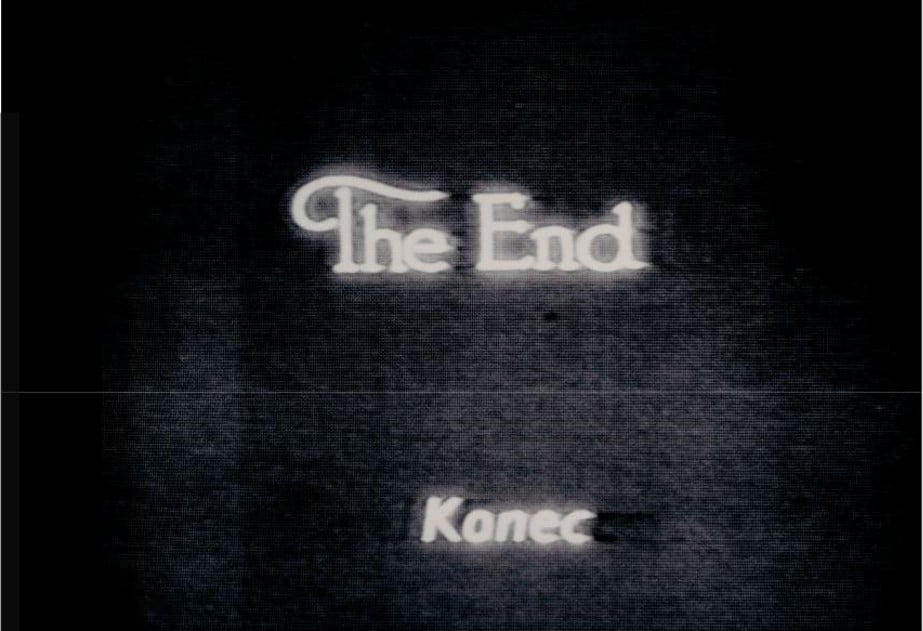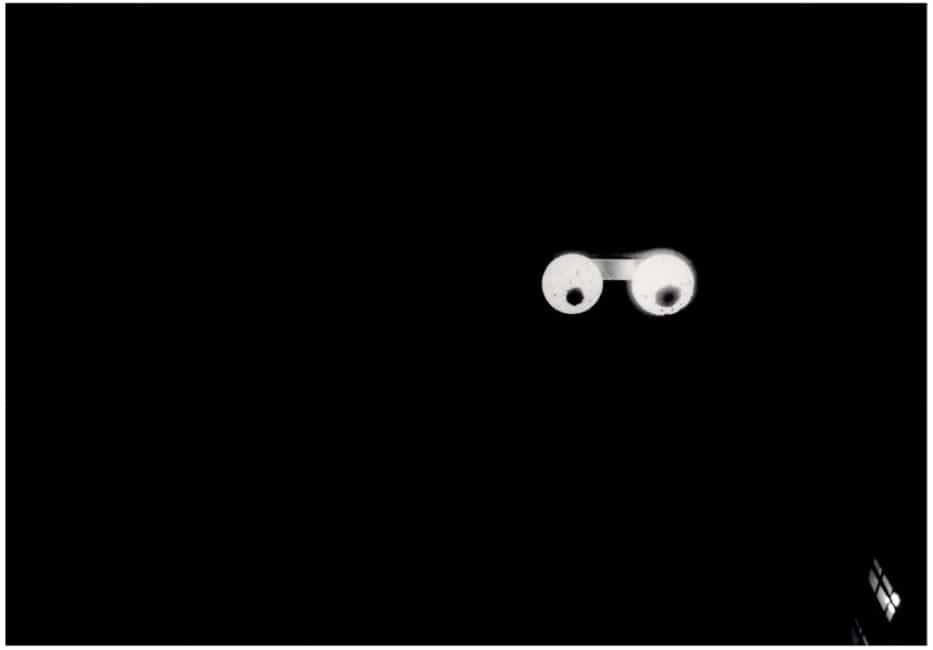Alena Kotzmanová
Snares of the negative
She thus meditates about the medium as such, its various forms, vacant spaces and processes that bring unexpected and startling fusions and insights.Within
the framework of a genre in its own right – a kind of “fictitious documentary” that is created in the same way as a photo-reportage – but instead of conveying information, it works rather the other way around – Kotzmanová embarks on examining reality as well as creating new, parallel worlds.
Alena Kotzmanová likes stories – the weirder, the better. Her video Přízemí (Ground Floor), composed of photographs, is based on an idea by art critic Tomaš Pospiszyl – a horror-like love plot which is at the same time a contemplation of photography as a vampirical medium. Kotzmannová’s photographs form a brilliant accompaniment, at times chilling, at times bewitching, perfectly illustrating not only the story itself but also the very nature of the medium she comments on. Přízemí (Ground Floor) can thus be understood as a possible clue to Kotzmanová’s photographs. They are always a door to another, separate reality, outside of our quotidian understanding but at the same time firmly contained or predicated both within the possibilities of the medium and the world itself. If classical photography is obsessed with defining the world, Kotzmanová is trying to define new worlds, unseen but suspected.
While her series Dočasná osoba (Temporary Person) – a diploma work at the Academy of Applied Arts – was influenced by science fiction and dealt with a search for traces of the future in the contemporary world, as a sort of inverted deja-vu, in her collection entitled Station to Station she attempted to create a fictitious story held together by an abstract personage, which takes on diverse identities in diverse locations. Kotzmanová’s last project to date, Klasika (Classic) goes in a new direction, becoming subtly, almost impalpably historical, as if one were to leaf through a book of unknown provenance, as well as going through our own memory – not an invidual‘s concrete, personal memory, but our collective memory. The history of photography only in shades of colour, in nuances, the past of vision insinuated on bridges and in suburban backyards – Kotzmanová does not abandon her direction but continues to move on thin ice.
Although her various projects are presented in a fairly definitive form, in some cases she utilizes the same photograph in various contexts. This goes to show her autonomy, but it also becomes evident that she stresses the whole, that she thinks in terms of concepts. An individual photograph conditions the whole – but the relationship also works in reverse. Simple, and yet quite tricky. Kotzmanová s love for black and white photography is the symptom of an interest in a near-extinct media and its historical connotations. On the one hand, she often rigourously challenges the photographic genre by using various special techniques and adjustments (e.g. printing on canvas or prints wrapped in plastic sheets), yet on the other hand cannot part with photography. She is fascinated and bound to its “negativity”, its ever causal and at the same time spectral nature, its graininess guaranteeing the “here and now”. Although we can see in her photographs common traits with the that has a long tradition of “imaginative photography” in the Czech lands, Kotmanová’s approach is really based on the poetics of contemporaneity, on a concept that understands formlessness and arbitrariness as a necessity, or as a structural element – she thinks as a builder, not as a registrar. There is more darkness than light, more mysteries than revelations. Why would that be?
#3 Transforming of Symbols
Archive
- #45 hypertension
- #44 empathy
- #43 collecting
- #42 food
- #41 postdigital photography
- #40 earthlings
- #39 delight, pain
- #38 death, when you think about it
- #37 uneven ground
- #36 new utopias
- #35 living with humans
- #34 archaeology of euphoria
- #33 investigation
- #32 Non-work
- #31 Body
- #30 Eye In The Sky
- #29 Contemplation
- #28 Cultura / Natura
- #27 Cars
- #26 Documentary Strategies
- #25 Popular Music
- #24 Seeing Is Believing
- #23 Artificial Worlds
- #22 Image and Text
- #21 On Photography
- #20 Public Art
- #19 Film
- #18 80'
- #17 Amateur Photography
- #16 Photography and Painting
- #15 Prague
- #14 Commerce
- #13 Family
- #12 Reconstruction
- #11 Performance
- #10 Eroticon
- #9 Architecture
- #8 Landscape
- #7 New Staged Photography
- #6 The Recycle Image
- #5 Borders Of Documentary
- #4 Intimacy
- #3 Transforming Of Symbol
- #2 Collective Authorship
- #1 Face






